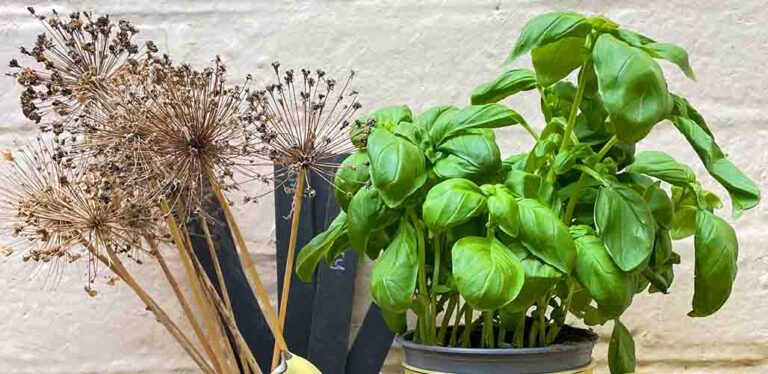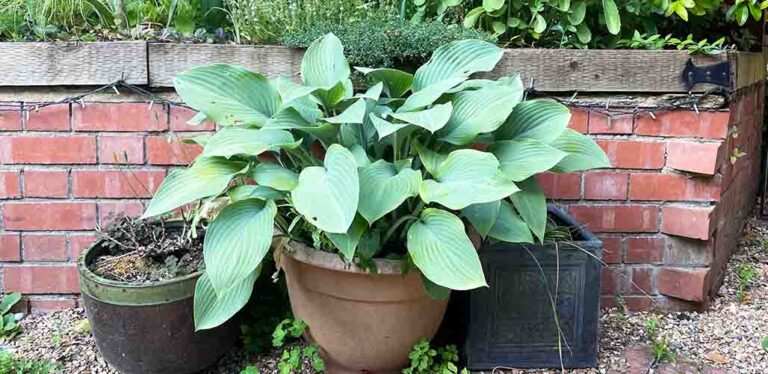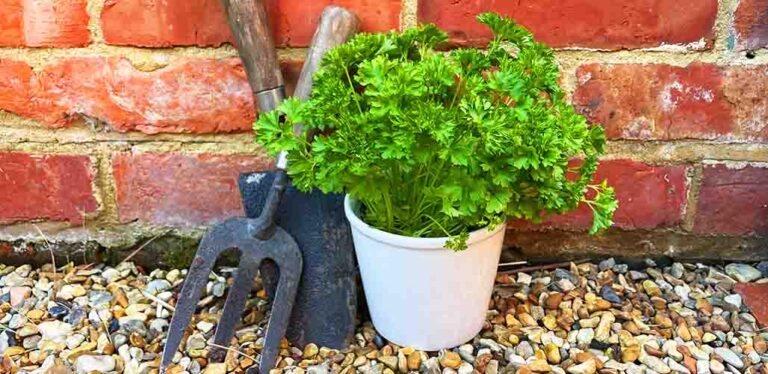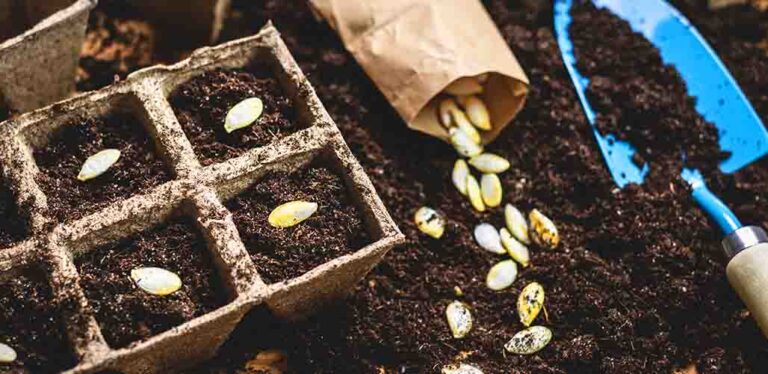Protecting Container Plants From Frost
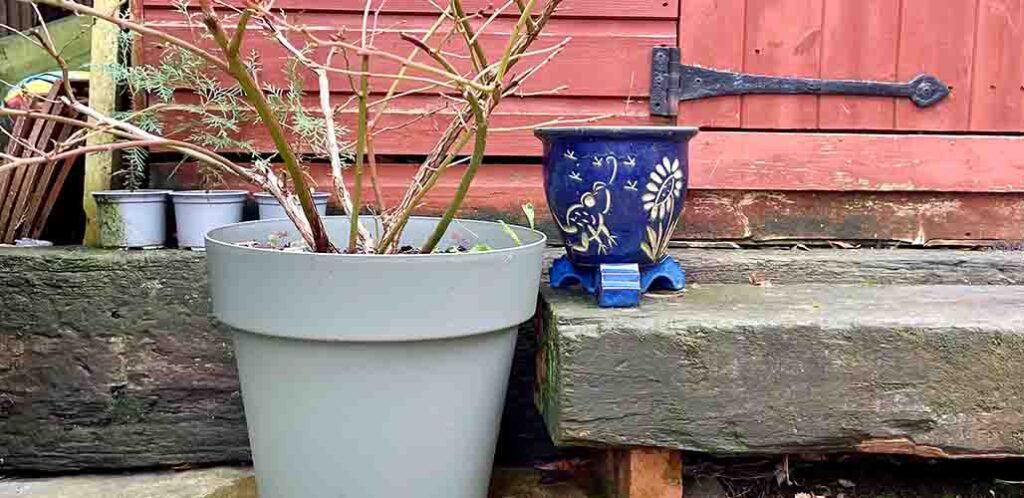
Protecting container plants from frost is vital in some regions, if you want your cold tender plants to survive until spring. There are several ways of going about it, depending on the size of the container and its plant, whether the plant has gone dormant, and what space you’ve got available. Here’s a complete guide to identifying which container plants need frost protection, and how to shelter them between the first and last frost dates.
- Why protect container plants from frost?
- What to consider
- 6 ways of protecting container plants from frost
Why protect container plants from frost?
Container plants sometimes need insulation from sub-zero temperatures to protect the plant, and the container.
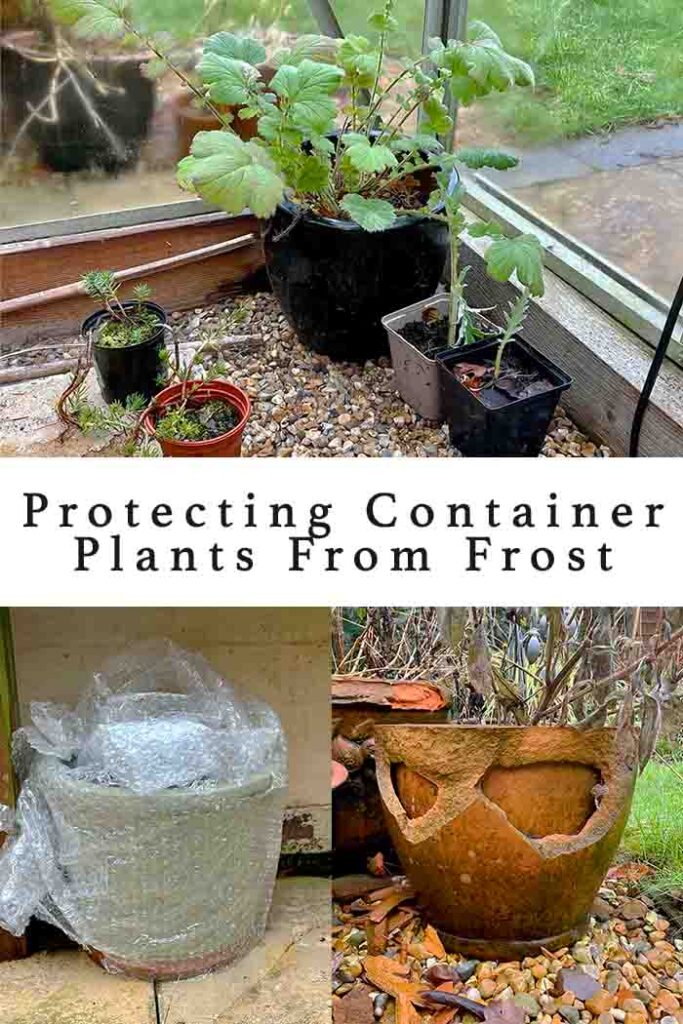
To protect the plant
Some plants are frost tender, meaning freezing conditions will kill them. For example:
- Bananas
- Bottlebrush
- Canna lilies
- Chilean glory vine
- Dahlias
- Figs
- Gladioli
- Harlequin glorybower
- Kakabeak
- Tree ferns
- Pelargoniums
- Potato vine
They are all native to places with mild winters, so they aren’t adapted to survive in sub-zero temperatures. When they get that cold, the water in their tissues freezes and expands, rupturing cell walls and causing them to break down.
To protect the container
Some containers benefit from a bit of frost protection themselves. Clay pots tend to be porous, and if they freeze when they’re wet, the expansion of the water inside the pot walls causes them to split. Not only do you end up losing the container, but the plant’s exposed roots are more vulnerable to frost damage to their roots. Nutrients will leach out of the soil faster in wet weather, too. This terracotta planter in my garden lost large sections in two successive hard frosts last winter. At the moment I’m still pressing it into service by tucking the broken pieces inside the pot to patch the holes, but eventually it’s going to need replacing.

Things to consider
As winter draws in, you might not be able to give all your container plants the same amount of protection. And nor is it necessary. Here are some things to consider:
- Does that container need protecting? Not all plants are frost tender. These container-grown Japanese maples don’t mind the cold, and nor do hostas. Check what temperature you container species are hardy down to, and whether they need protection from freezing conditions. If you’re still not sure, ask a local plant nursery or gardening group whether your plant usually needs winter protection in your region.
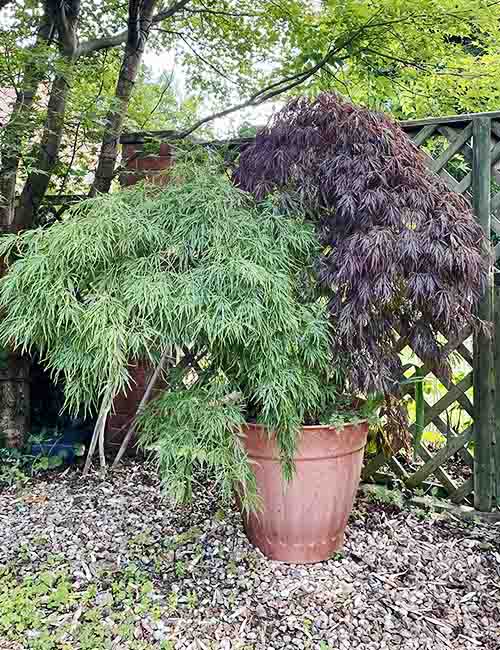
- Whether the plant goes into a dormant period. Some plants die right back and go dormant in winter, but their crown, tubers or roots are still vulnerable to frost damage when the ground starts to freeze. Containers of these plants need protecting over winter, but you don’t need to be able to reach them in that time. You can wrap them up, box them up, stick them in a back corner of your basement, etc. Meanwhile, frost tender plants that don’t have a dormant period need to be kept somewhere with enough daylight to meet their needs, and where you can water them periodically.
- How much space you have. Depending on how many container plants you have to protect, and how much space you have indoors, you might need to prioritize which containers get the most protection. The most frost tender plants aren’t always the most deserving of protection, if they’ll be cheap to replace in spring!
- The size of the container and its plant. Smaller containers can be protected from frost by moving them. Large ones that are too heavy to move need to be protected where they stand.
6 ways of protecting container plants from frost
Once you’ve established which of your plants need the most protection, and which are your top priorities, here are 6 ways of protecting container plants from frost:
- Bring them indoors
- Move them into a frost free greenhouse
- Collect them under a cloche
- Move them to a frost free spot
- Wrap them in insulating materials
- Lift and store them
1. Bring them indoors
If the plant (and its container) are small enough, and your home is big enough, then one option is to bring your tender container plants indoors over winter. For container plants that go dormant, this could be a garage or basement. If they’re very tender even in non-freezing conditions, wrap them up for extra protection.
Plants that don’t have a dormant winter period need an indoor spot where they’ll still receive enough light, and you can water them occasionally. For example, pelargoniums. If it helps to fit them in a sunroom or window sill, you can cut the stems back by up to one third. Here’s one of my pelargoniums taking its winter vacation in our utility room:
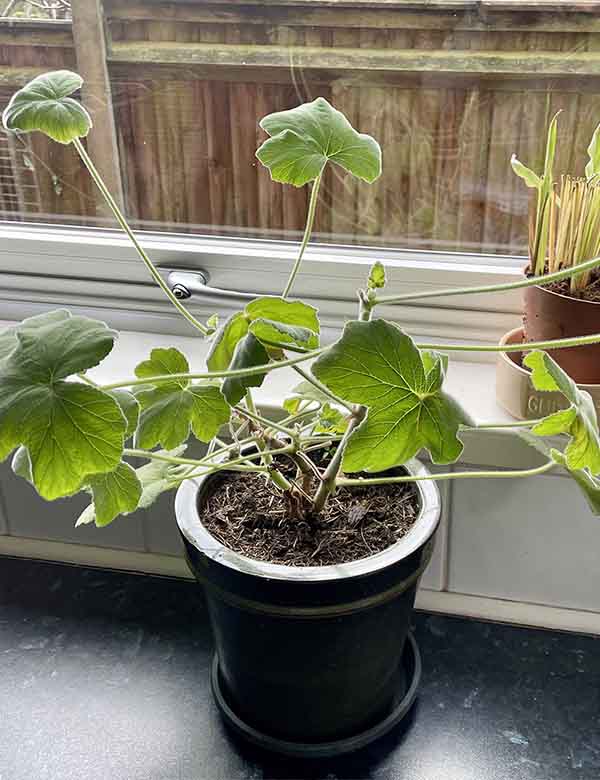
Time it right
It’s generally a good idea to bring tender plants that don’t have a dormant period inside sooner rather than later. My pelargonium has been indoors since several weeks before our first frost date, for two reasons:
- It reduces the odds of being caught out by an early frost.
- The longer you wait, the more the indoor conditions will differ from the conditions in your garden. Outdoor conditions are significantly colder and the relative humidity is higher than inside our homes in winter. The bigger that difference gets, the more of a shock your plant will get when you move it indoors.
2. Move them into a frost-free greenhouse
A greenhouse is a practical place to relocate many kinds of container plant into over winter. Even on cold days, sunshine coming through the glass tends to warm the interior of the greenhouse above the outside temperature, and trap that heat to some degree overnight. If your greenhouse has a stone or concrete floor, it will act like a storage heater and absorb the sun’s heat during the day, and release it slowly overnight, preventing frost from forming inside the greenhouse. And of course, your greenhouse is likely to be empty of all the tomatoes, cucumbers, melons and other summer crops you were using it for until the frosts came!
However, a sharp, hard frost can catch you out, and freeze even the contents of a greenhouse. So this might not be enough for very tender plants, or expensive or sentimental plants that you don’t want to take any risks with.
3. Collect them under a cloche
If you don’t have room indoors, and you don’t have a greenhouse, another option is to gather your pots together under a large cloche or mini greenhouse. You can find these online or in nurseries and garden centers. They usually consist of a metal frame and a clear PVC or PE cover which protects its inhabitants from light frosts. They’re easy to assemble and take down, so when spring comes you can stow them aways for next winter, or repurpose them as a cold frame to harden off vegetable and flower seedlings!
4. Move them into a frost free spot
If moving your container under cover isn’t an option, then some frost tender plants might be protected enough by standing against a sheltered south-facing wall. To identify these places, you’ll need to spend at least one winter in your home, and get outside as early as possible every morning to look for the sheltered pockets which don’t get frost. This glazed pot containing dormant dahlia tubers is tucked under a bench against our kitchen wall. My priorities are stopping it getting waterlogged (which could rot the tubers) and protecting the glaze. This spot faces southwest and is sheltered from cold winds. On the other side of the wall (which is really poorly insulated, because our house is old) are our fridge and freezer, which warm the wall from the other side. It’s my ‘better than nothing’ spot, for when the other frost free spaces are getting full.
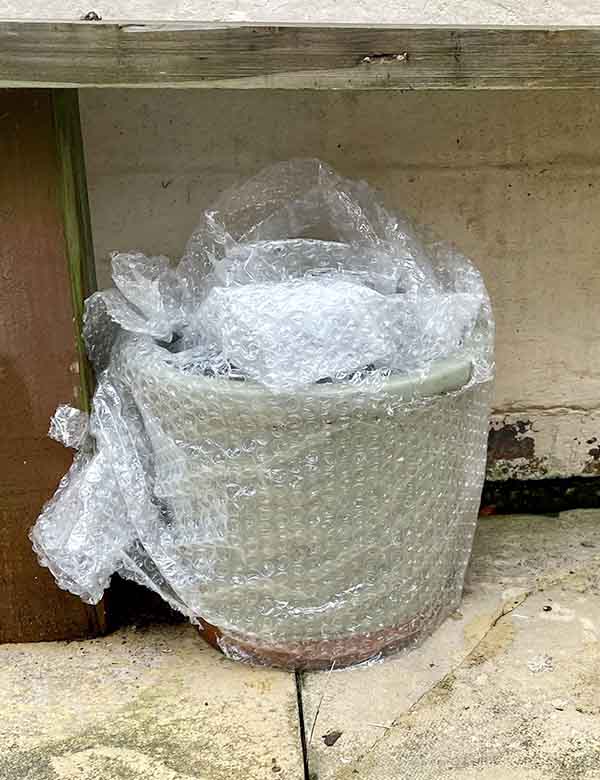
I can see that I ought to readjust that bubble wrap though – it was a rush job!
5. Wrap them in insulating materials
For large containers that are too heavy to move, or whose occupants are too tall to position under cover, such as mature tree ferns, you’ll need to protect them from frost in situ instead. You can do this by wrapping them in newspaper, corrugated cardboard and burlap, or making a large chicken wire cage around the container and filling it with straw or fallen leaves from your yard.
6. Lift and store them
Finally, some plants can be lifted and stored out of their container. For example dahlias, canna lilies, gladioli, and some begonias. All of these plants grow from tubers – specially adapted underground structures which look like swollen roots but are actually specialized underground stems. In winter, all of the plant above the soil dies back. In spring, it regrows from the tuber. The tubers are vulnerable to damage and dying off if they freeze, but they can be lifted out of the soil and stored in dry compost, wood shavings, hay, straw, or shredded paper over winter. Their empty containers can be stacked, and also stored somewhere frost free. This is a practical and space-efficient solution for storing lots of tuberous container plants.
Summary
Protecting container plants from frost in winter is an annual landmark in the gardening calendar. It requires a little forward planning, but it’s worth it to ensure that you can enjoy your favorite plants – and planters – again next year. Let us know whether you have difficulty finding safe spots for all your tender plants in the comments box down below. Do you have any tips for protecting them that I haven’t included here?


